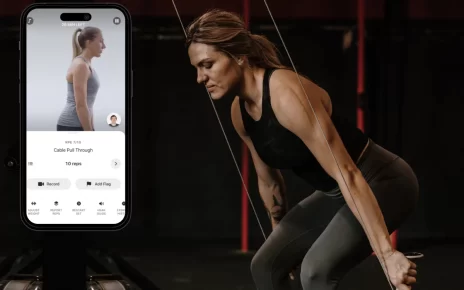You know the scene. A wrist adorned with a sleek, high-tech band that buzzes with notifications, tracks your sleep, and counts every single step. Wearable tech is everywhere. But what if you don’t want to wear your progress? What if the best fitness tracker is, well, you?
Honestly, you can absolutely track your fitness without another piece of tech to charge. It’s about getting back to basics and listening to the most sophisticated device you own—your own body. Let’s dive into the surprisingly effective world of non-wearable fitness tracking.
Why Ditch the Device? The Case for Analog Tracking
Sure, wearables offer a flood of data. But that’s also the problem. It’s easy to get overwhelmed, or worse, to start prioritizing the data over your actual feelings. Analog tracking cuts through the noise. It fosters a deeper mind-body connection, saves you money, and honestly, it’s one less thing to worry about. No more “I forgot to charge my tracker” excuses. Your journey, your rules.
Your Body’s Built-In Dashboard: Subjective Metrics That Matter
Before we had heart rate monitors, we had… a pulse. And before step counters, we had a sense of how we felt at the end of the day. These internal signals are powerful, if you learn to read them.
The Morning Check-In
How do you feel the moment you wake up? Don’t just jump out of bed. Take 60 seconds. Rate your energy level, your muscle soreness, your general mood. It’s a simple 1-10 scale. Over time, you’ll see patterns. Maybe you’re consistently drained after late nights, or you feel fantastic on days after you’ve eaten well. This is data, pure and simple.
Perceived Exertion: Your Personal Intensity Gauge
Forget hitting a specific heart rate zone for a moment. The Borg Rating of Perceived Exertion (RPE) scale is a classic for a reason. During your workout, ask yourself: “How hard does this feel?”
| RPE Level | What It Feels Like |
| 6-7 | Light effort; you can hold a full conversation. |
| 8-9 | Moderate effort; you can speak in short sentences. |
| 10-11 | Vigorous effort; speaking is difficult. |
| 12-13 | Very hard; you can only manage a few words. |
| 14-15 | Maximum effort; no-talking zone. |
This subjective measure is incredibly accurate. It automatically accounts for factors a wearable can’t—like how well you slept or your stress levels that day.
Low-Tech Tools for High-Impact Insights
Okay, so we’re not completely off-grid. You can use a few simple, non-wearable tools to get concrete numbers without being tethered to a device 24/7.
The Humble Notebook and Pen
This is your fitness bullet journal. It’s profoundly flexible. Track anything you want:
- Workout Details: Exercises, weights, reps, and sets.
- Mood & Energy: A quick note on how you felt during and after.
- Nutrition: Not for obsessive calorie counting, but to note how certain foods make you feel.
- Personal Bests: There’s nothing quite like physically writing down a new PR.
The physical act of writing it down creates a stronger mental connection than just tapping a screen.
Your Smartphone (But Not How You Think)
We’re not talking about a step-counting app that runs in the background. Use your phone intentionally. A simple timer app is a powerhouse. Use it for:
- Timing rest periods between sets.
- Tracking how long you can hold a plank.
- Doing interval workouts (e.g., 30 seconds on, 30 seconds off).
You can also use the voice memo app to log a workout verbally as you go. It’s faster than writing and feels more natural for some.
The Tape Measure and The Fit of Your Clothes
The scale can be a liar, honestly. It doesn’t differentiate between fat, muscle, and water weight. Progress photos are great, but a tape measure gives you hard numbers. Track the circumference of your chest, waist, hips, and thighs. Even a loss of a half-inch is a massive victory. Similarly, how your jeans fit is a real-world, tangible metric that matters far more than a number on a screen.
Building a Mindful Movement Practice
This is where it all comes together. Fitness tracking without wearables is fundamentally about mindfulness.
Listening to Your Breath
Your breath is a direct line to your nervous system and effort level. During a run, can you breathe through your nose comfortably? Or are you gasping for air? This tells you more about your intensity than any beep from a watch. It’s a built-in biofeedback tool.
The “Can I Talk?” Test
A classic for cardio. If you can sing, you’re probably not working hard enough. If you can hold a conversation, you’re in a good, sustainable zone. If you’re struggling to get words out—well, you’re pushing your limits. It’s beautifully simple.
The Takeaway: You Are the Ultimate Metric
In a world obsessed with quantified everything, choosing to track your fitness without a wearable is a rebellious act of self-trust. It’s not about rejecting technology outright. It’s about reclaiming your intuition. It’s about realizing that the most important data point isn’t your resting heart rate—it’s how alive you feel while you’re living your life.
So, maybe try it for a week. Leave the watch on the charger. Grab a notebook. Tune in. You might just discover that the most accurate fitness tracker was with you all along.





